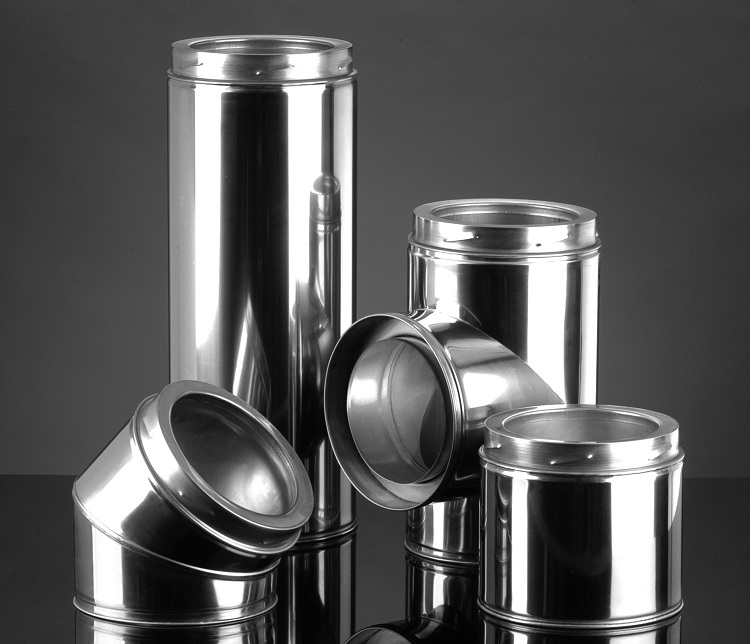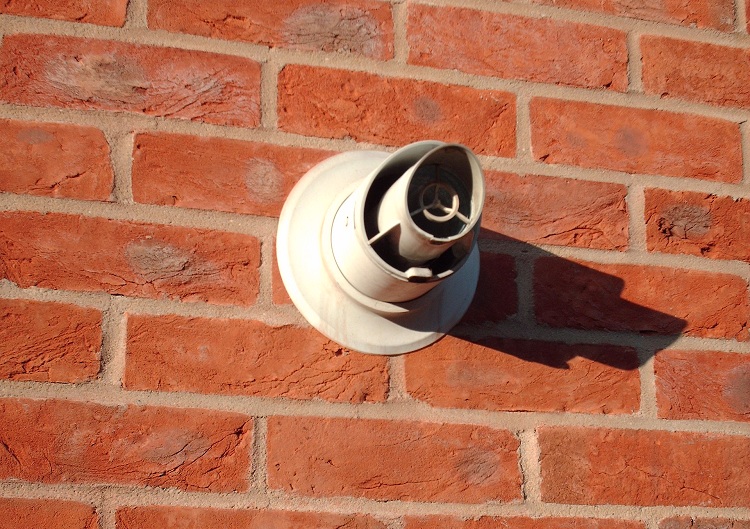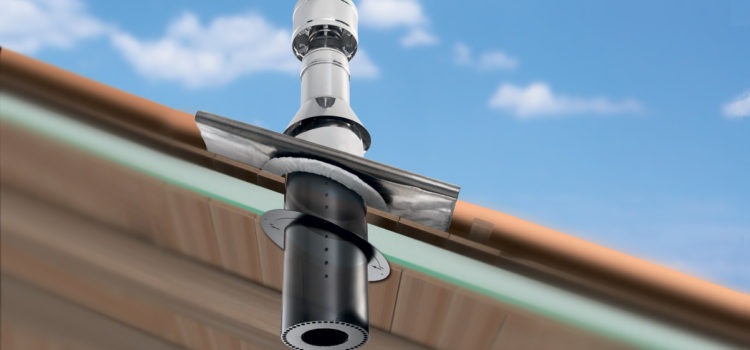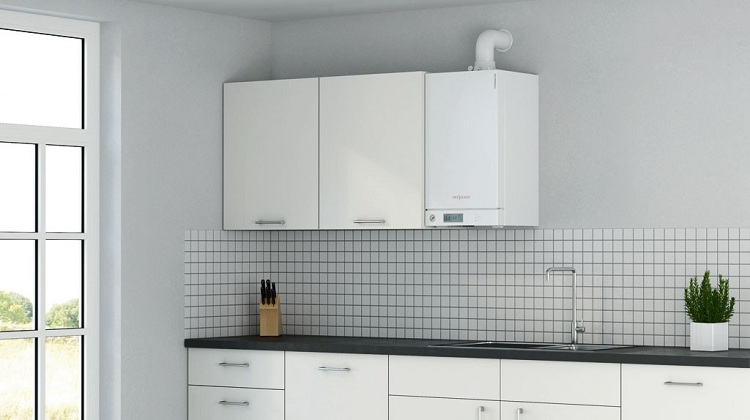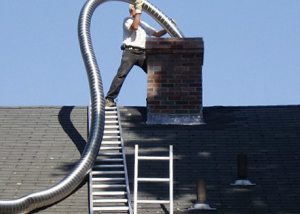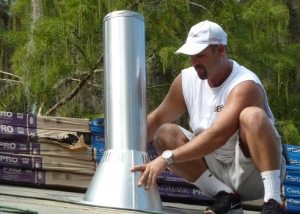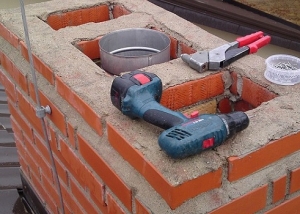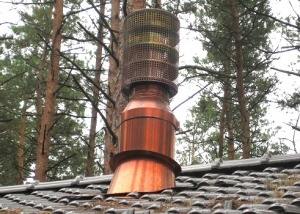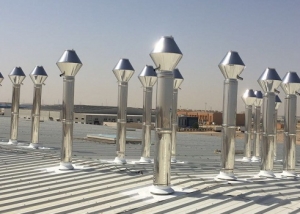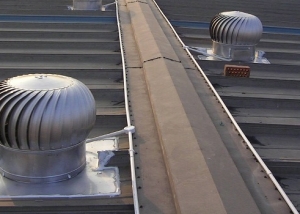A gas column is an apparatus in which water is heated due to the energy generated by the combustion of gas. As a rule, gas water heaters are installed in private houses, however, such devices can also be found in apartments of multi-storey buildings. To exhaust the combustion products that are formed during gas processing, it is customary to lay chimneys.
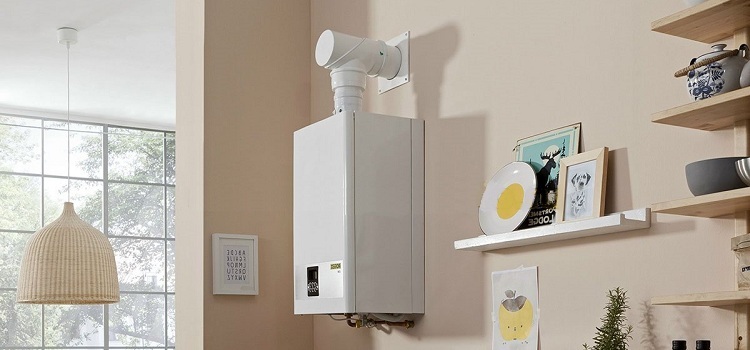
The chimney device for the geyser differs depending on the type of appliance and its installation location
Content
Types of geysers
According to the principle of action, gas columns are divided into two main types:
- equipped with an open chamber in which fuel is burned;
- columns with a closed combustion chamber.
In the first case, the heater operates due to natural traction and requires the installation of an exhaust hood and a chimney duct. The main advantage of such a geyser is that it costs less than a closed type device, and is also more reliable in operation.
In turn, closed-type water heaters (gas-fired) do not need to install a smoke duct. Closed geysers are also called turbine, since the thrust in them is pumped through the turbine. The removal of combustion products in such structures occurs due to the turbine and coaxial pipe. The cost of such products is higher than for speakers with an open chamber, and they are also volatile.
Such heaters are classified by the following parameters:
- power indicator;
- ignition option.
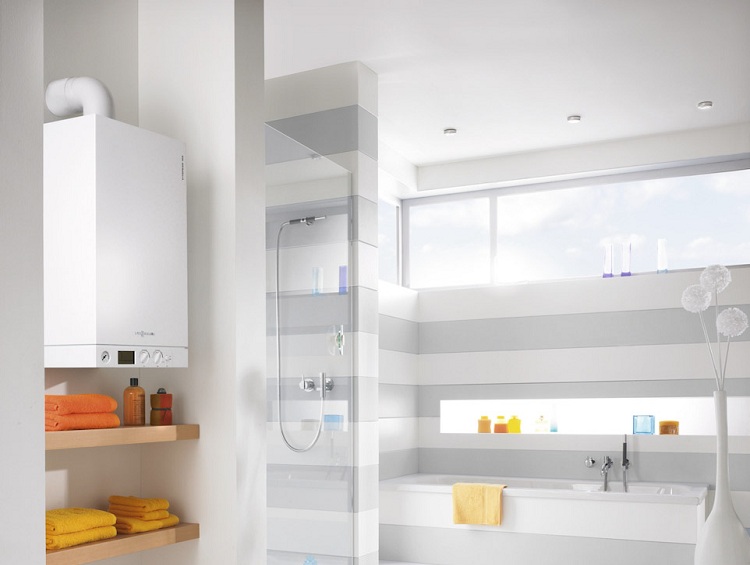
Closed-type columns do not require the installation of a special smoke channel, for them a coaxial chimney is enough
The choice of a gas column depends on the operational features in a particular case, as well as on the financial capabilities of the owners of the house or apartment.
Varieties of chimneys for geysers
The chimney for the gas column can be made of various materials. Consider the main materials from which chimney communications are made:
Flexible chimneys made of corrugated pipes. Individual elements of such chimneys are made of aluminum foil. To give rigidity, the corrugated structure is equipped with a special spiral, which is made of steel wire. The main advantage of such pipes is easy installation.
Note! If necessary, corrugated pipes can be bent at any angle, as well as change their length.
Aluminum chimneys. Aluminum chimney communications have the following advantages: light weight, ease of installation. And also the use of such chimneys helps to avoid the formation of condensate inside the chimney during the operation of heating equipment. Of the minuses of aluminum chimneys, one can distinguish one main one - the need for arranging thermal insulation.
Exhaust systems made of galvanized steel. Galvanized steel has high strength characteristics and useful anti-corrosion properties. Like pipes made of aluminum, these products also need to be insulated.
Chimneys from a sandwich pipe. A sandwich pipe is a product that is represented by two pipes (one of them is located in the other) and a layer of heat-insulating material between them. Experts recommend installing chimneys from sandwich pipes in cases where communication needs to be laid through ceilings or roofing.
Coaxial chimney for gas-fired speakers
Today, coaxial chimney flue is the most modern solution for the installation of heating communications. Such smoke removal devices are used in systems that are characterized in that they have a closed chamber for processing gas.
From a structural point of view, the coaxial chimney is a central pipe located in the second pipe. The inner pipe in this design performs the function of removing combustion products from the heater outside the residential building. And the air necessary for the operation of the heating device comes from the street and is delivered to the closed chamber through the free space located between the two pipes.
This design of the chimney has several advantages:
- reducing the length of the chimney communication;
- increase in the coefficient of performance (COP) of the gas column;
- lack of oxygen consumption in the room where the heating equipment is located.
Thus, due to the fact that the gas column with a coaxial pipe takes air outside the premises, there is no need to organize a complex ventilation system. During the installation of this equipment, care must be taken to ensure that the cross-sectional index of the coaxial pipe is not lower than that of the outlet pipe of the gas heating device.
Basic requirements for a chimney of a geyser
The chimney is a communication that performs a very important function, namely: the removal of combustion products from the heating device outside the house. Any errors during the selection or installation of this equipment can cause emergencies, so experts recommend that you carefully study the basic requirements for chimneys. Consider them:
- the design, which carries out the removal of combustion products, must be distinguished by high sealing performance. Otherwise, there is a risk of gas leakage;
- The chimney must be mounted with reliable materials. The pipe material must be resistant to harmful corrosive influences, as well as to high temperatures;
Important! Any chimney design, regardless of the material of manufacture, must comply with the building codes set forth in SNiP.
- it is mandatory to comply with the installation rules associated with fixing the chimney (any slack is unacceptable);
- traction should be the same throughout the communication. To achieve these goals, it is recommended to use pipes that have a circular cross-sectional shape. This is due to the fact that round pipes are characterized by high throughput;
- the index of the inlet section determines the diameter of the entire communication;
- installation of the chimney duct must be carried out in a vertical plane. The permissible deviation during vertical installation of this communication is 30 ° relative to the axis;
- laying a pipe through a wall (for connecting a heating device) is allowed to be performed with a deviation of 90 °;
- chimney communication must be equipped with an inspection window. This is necessary in order to protect the gas processing equipment from condensation.
The choice of the required cross-section of the flue pipe communication depends, as a rule, on a particular case and is carried out taking into account the power of the heating device. The most common cross-sectional indicators of pipes used for the removal of combustion products are 110 mm and 130 mm.
Features of the installation of the chimney in an apartment and a private house
The laying of the chimney duct in the apartment is directly related to the presence of a stationary channel to remove smoke. As a rule, such channels pass through the walls and form the ventilation system of a multi-storey building. Installation of a heating system in an apartment requires a chimney from a gas column to such a channel. In the absence of stationary ventilation, it is recommended to install coaxial smoke exhaust.
There are other nuances of installing chimneys for a geyser in an apartment, which are worth paying attention to:
- communication design, which is necessary for the removal of combustion products, must comply with SNiP. The chimney must not be narrowed or pinched, as this can cause smoke in living quarters.;
- smoke exhaust pipes should have a smooth inner surface, contributing to throughput indicators;
- as a rule, the installation of the chimney in the apartment is carried out in a vertical plane;
- the permissible number of bends in vertical communication is not more than 3;
- the channel should be well sealed.
For indoor installation of chimneys it is not recommended to use aluminum corrugated pipes. This is due to the fact that such pipes very quickly fail (burn out). The most suitable option for the apartment is communication made of galvanized steel.
Installation of a chimney in a private house is a more complicated undertaking. First of all, it should be noted that the exact role is played when exactly the installation of this communication will be carried out. If the laying of the chimney duct will be carried out during the construction phase of the building, it is recommended to equip the brick shaft in a vertical plane and place a galvanized steel pipe inside it.
Important! The heating system and the gas column must have different shafts to remove combustion products.
In the event that a private house has already been built, a galvanized geyser pipe equipped with the necessary thermal insulation is best suited. There are two options for installing a chimney in a private house:
- through the roof;
- through the wall.
The chimney must be mounted so that if necessary it can be easily reached. And the end of the chimney structure should be located above the roof at a distance of at least 0.5 m. The main thing to remember is compliance with building codes and rules when installing a chimney structure - the main requirement, following which you can avoid many troubles in the future.
